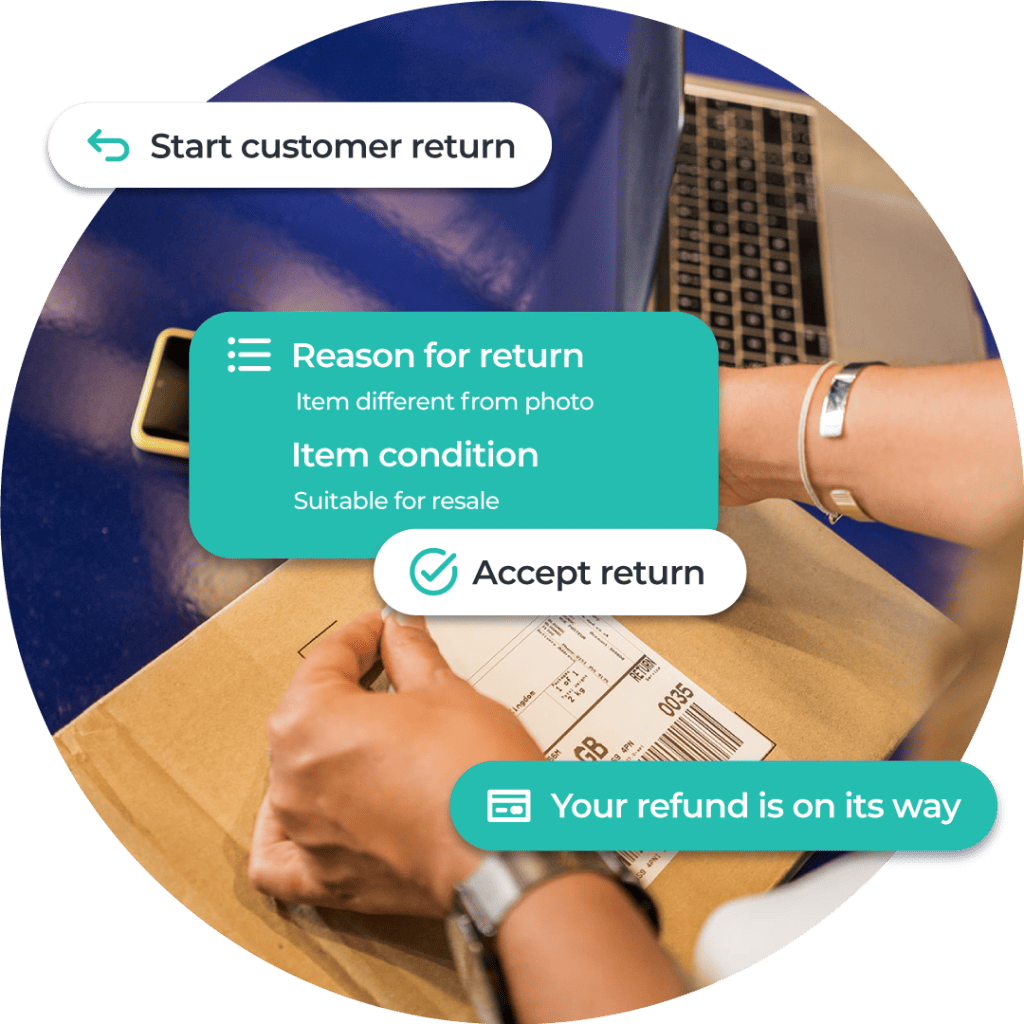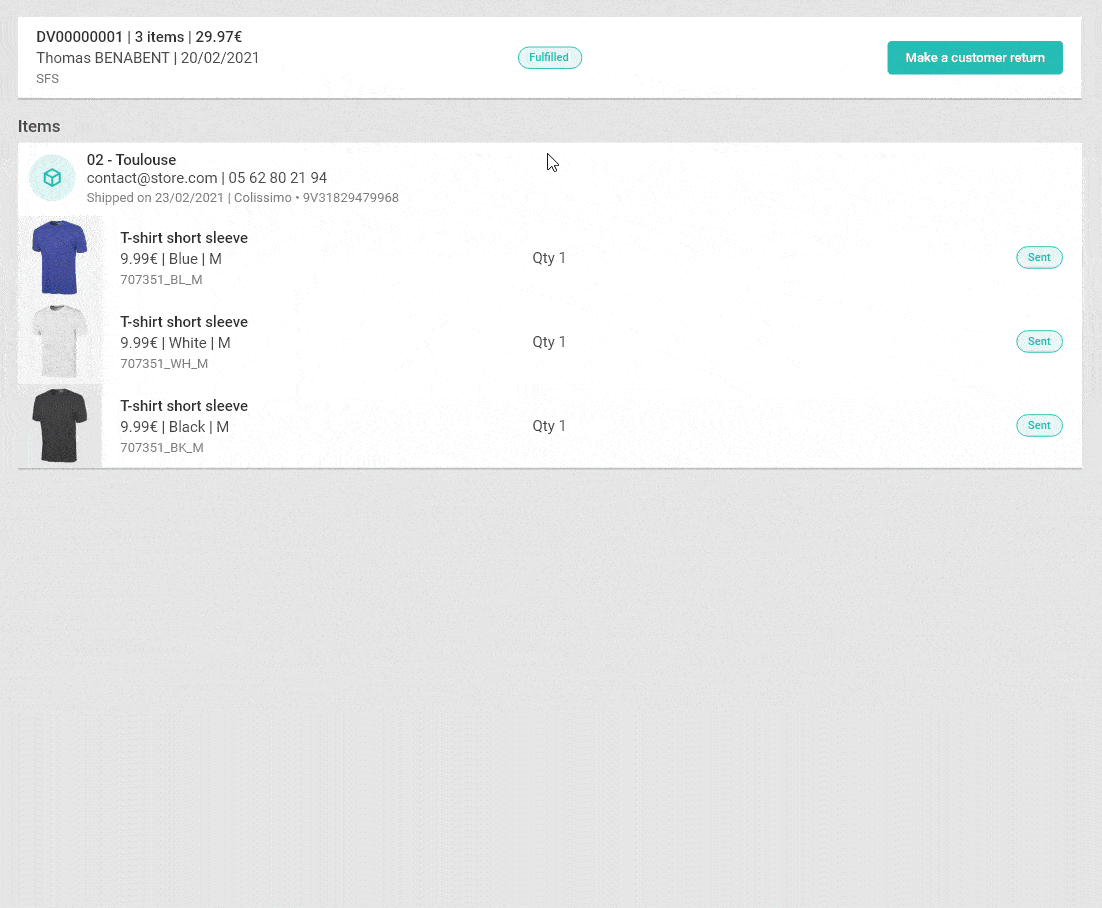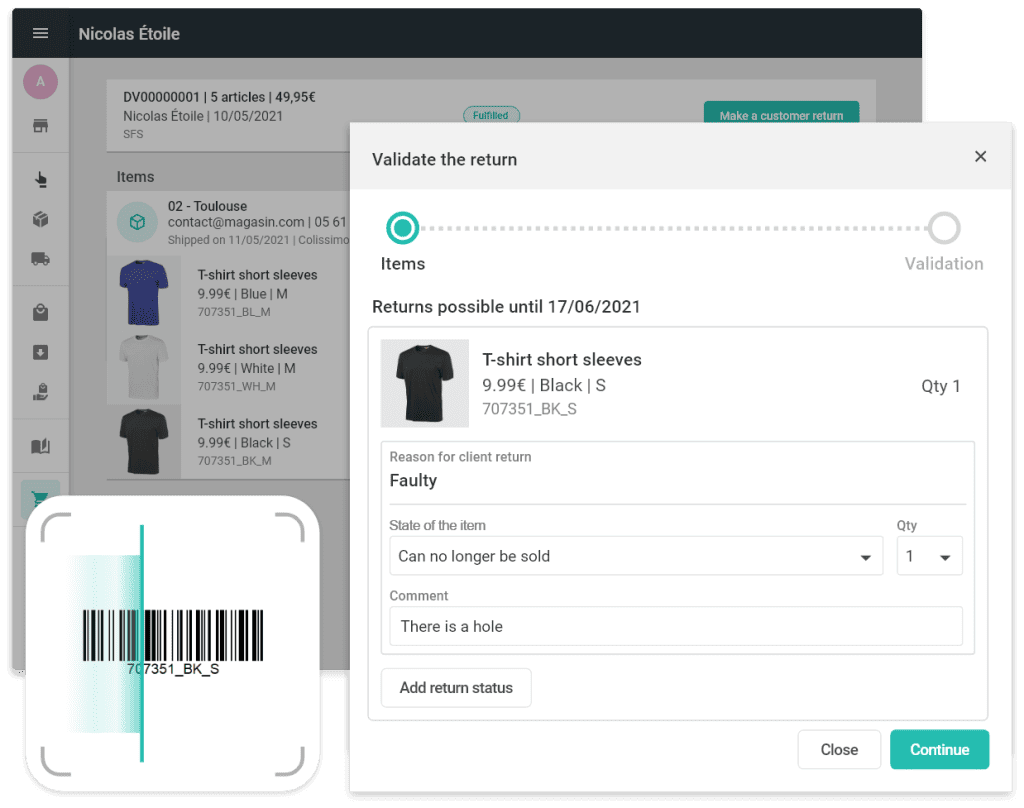In-Store Returns

In-Store Returns overview
In-store returns refers to the practice of customers physically bringing back products purchased in-store or online to a retail store for the purpose of seeking a refund, exchange, or store credit. This process allows customers to address issues with their purchases, such as defects or dissatisfaction, in a physical store setting, providing convenience and often facilitating a quicker resolution compared to online returns. In-store returns are a common service offered by retailers to enhance customer satisfaction and maintain positive customer relationships.
While other return methods are natively managed by the Order Management Centre, In-Store Returns is a dedicated module, which optimises in-store processes and facilitates a seamless customer experience.
Why should you implement In-Store Returns?
Enhanced customer convenience
The solution allows for quicker issue resolution and boosts customer loyalty. Customers can immediately receive refunds, exchanges, or assistance, and are more likely to continue shopping with a retailer that offers a hassle-free returns process.
Improved customer insights
In-store returns provide an opportunity for retailers to gather valuable customer feedback and insights. Retail staff can engage with customers, understand their reasons for returning items, and use this information to improve products or services.
Reduced shipping costs
Retailers can save on shipping expenses associated with processing online returns, which can be substantial. In-store returns help manage return-related costs more effectively.

In-Store Returns benefits for customers

Streamlined returns process
Customers opting for in-store returns do not need to print labels, pack items for shipping, or schedule courier pickups. This simplifies and expedites the return process.
Immediate confirmation
Store returns provide customers with instant confirmation that their return has been accepted, fostering trust and transparency in the transaction.
Cost savings
Customers are typically not charged return fees when returning items in-store, eliminating potential return shipping costs or restocking fees.
FAQs
How does In-Store Returns work?
How will it change the daily workload of store staff?
How does an OMS handle in-store returns?
What information does the OMS capture during an in-store return?
How does the OMS handle refunds and exchanges for in-store returns?
Can the OMS integrate with other systems, such as Point of Sale (POS), for in-store returns?
Are in-store returns the only type of returns managed by OneStock?
● Store Returns: Facilitating the return of online purchases directly to physical store locations, promoting convenience and immediate resolution.
● Customer service returns: Streamlining returns initiated through customer service interactions, enhancing customer support efficiency.
● Mailbox returns: Managing returns sent via postal services or mailboxes, with a focus on secure, trackable and organised handling.
● Warehouse returns: Managing returns processed through central warehousing facilities, ensuring efficient handling and inventory management.
● Blind returns: Handling returns where the item is sent back without prior notice or specific instructions, often used in supplier or vendor return scenarios.


